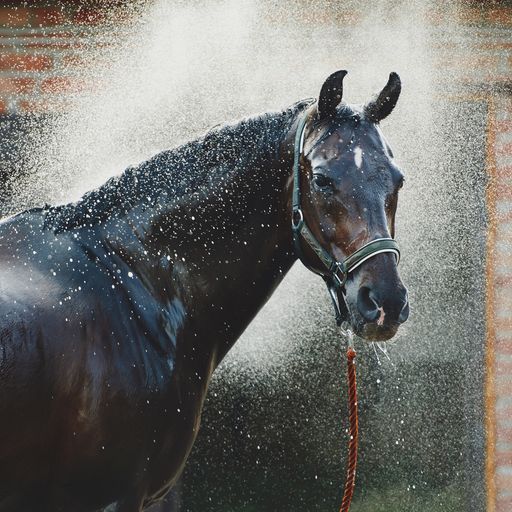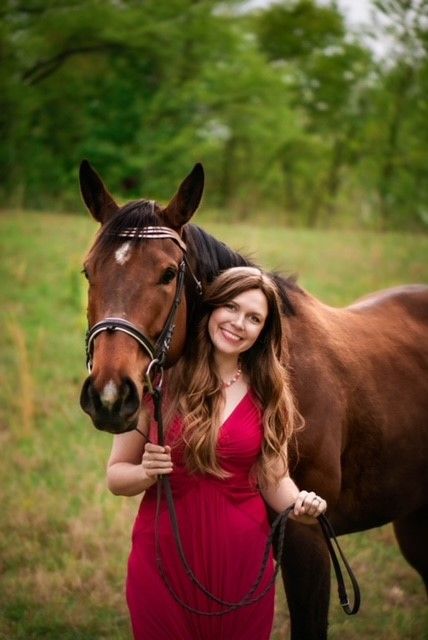8 Facts About Heat Stress in Horses
Modify daily activity as temperatures rise


Whether you reside in Texas, Florida, Arizona, California, or in the upper Midwest, every horse is at risk for heat stress.
Tony Hawkins, DVM, Valley Vet Supply Technical Service Veterinarian, outlines eight facts about heat stress in horses to keep in mind as summer temperatures keep rising.
1. First, know the signs
"Signs of heat stress in horses include muscle stiffness, lethargy, stumbling
and incoordination. If your horse stops sweating, that's a sign they're getting overheated and you need to stop exercising your horse and get them cooled down right away. Increased respiration rate is also a sign - normally, it should be eight to 12, up to 18 respirations per minute, so if a horse gets over 50, that's very concerning. If a horse's temperature is over 102° Fahrenheit, that's a sign that they're overheating. The normal range is 98° to 101° Fahrenheit."
2. Consider overall horse health
"Some groups of horses are at increased risk for overheating. Horses that are overweight, in poor condition, or are senior horses are at increased risk. Also, horses that move or are transported from a cooler climate into a hot climate. If these horses are not given time to acclimate, such as being kept in a cool barn with constant fans, they become at increased risk," Hawkins says.
"Also at risk are horses with conditions such as PPID (Pituitary Pars Intermedia Dysfunction), known as Cushing's Disease - the most common hormonal disorder affecting horses and ponies. A PPID horse will often have a thick, non-shedding hair coat. For these horses, it's important that you clip them a few times throughout the warmer months to keep a short hair coat"
3. Employ electrolyte refreshment
"Sweating is one of the most efficient ways that animals can cool down, and a horse can sweat up to two to four gallons per hour, which is remarkable. Horses will lose a lot of electrolytes while sweating, and they can experience electrolyte imbalances with all of the sweating that they do," he notes.
"Even if horses are not in training or being worked, it's a good idea to incorporate electrolytes into their diet. Doing so will replenish electrolytes, encourage more water intake, and help prevent dehydration. Keep horses safe by offering continuous access to fresh water, and feed electrolytes."
4. Do some easy math
"To help determine if it's safe to exercise your horse, understand the horse heat index. Simply add the day's temperature in Fahrenheit, plus the percentage of humidity. So, for example, let's say it's 90° outside with 60% humidity. That would be a horse heat index of 150. If you're in the 120 to 150 range, your horse is OK to exercise. From 150 to 180, there's a higher risk-light exercise may be allowed, depending on your horse's acclimation and fitness level. If the horse heat index is over 180, avoid exercising your horse. The risk is too great, unless they're an elite athlete."
5. Hot haulage
"Haul horses during the cool early mornings, evenings or overnight. Keep all windows and vents open to get as much air flow through the trailer as you can. Adequate shavings and mats will create a barrier between the hot road and the horse. If you have a long trailer tide, you need to stop at least every four hours. Get your horse out for 20 to 30 minutes and offer access to fresh water, maybe even a small meal. Walk them around and make sure they're cooled off. If you need to, hose them down."
6. Eating adds heating
"Schedule feeding around a horse's training schedule. Horses, like cattle, produce a lot of heat through digestion. Avoid combining the added heat being produced through muscular activity, exercise and digestion to cause overheating. Feed three to four hours prior to exercise, or wait at least two hours after exercise to feed your horse."
7. Make the wind blow
"Install a fan in each horse's stall. As you know, stalls can get very hot if they're closed up, so putting a fan in every stall can go a long way. As an added benefit, moving air from a livestock fan will help keep the flies and mosquitoes away."
8. Provide UV protection
"To protect horses from sunburns and some of the cancers that can develop because of them, look into fly sheets or fly masks that can provide up to 90% UV protection. This is especially important for your light-colored horses and Paints, which can be more prone to sunburns."
Consider these best practices from Dr. Hawkins, with Valley Vet Supply, to keep your horses safe this summer.

Dr. Tony Hawkins - Valley Vet Supply
More Horse Information Available at: https://www.valleyvet.com/c/horse-supplies.html
Tags:Horse Sense

Acreage Life is part of the Catalyst Communications Network publication family.














